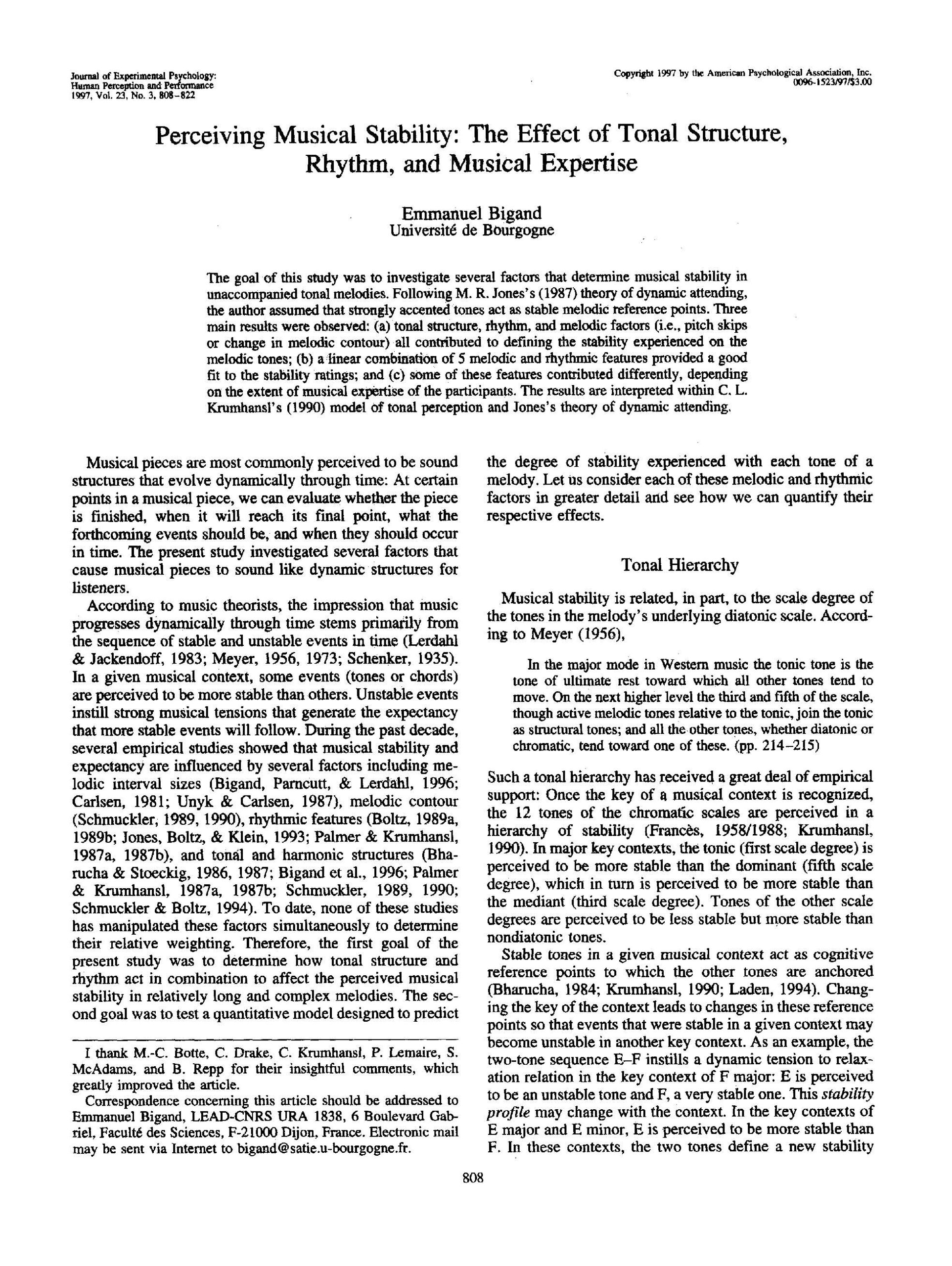The goal of this study was to investigate several factors that determine musical stability in unaccompanied tonal melodies. Following M. R. Jones’s (1987) theory of dynamic attending, the author assumed that strongly accented tones act as stable melodic reference points. Three main results were observed: (a) tonal structure, rhythm, and melodic factors (i.e., pitch skips or change in melodic contour) all contributed to defining the stability experienced on the melodic tones; (b) a linear combination of 5 melodic and rhythmic features provided a good fit to the stability ratings; and (c) some of these features contributed differently, depending on the extent of musical expertise of the participants. The results are interpreted within C. L. Krumhansl’s (1990) model of tonal perception and Jones’s theory of dynamic attending.
Perceiving musical stability: The effect of tonal structure, rhythm, and musical expertise
